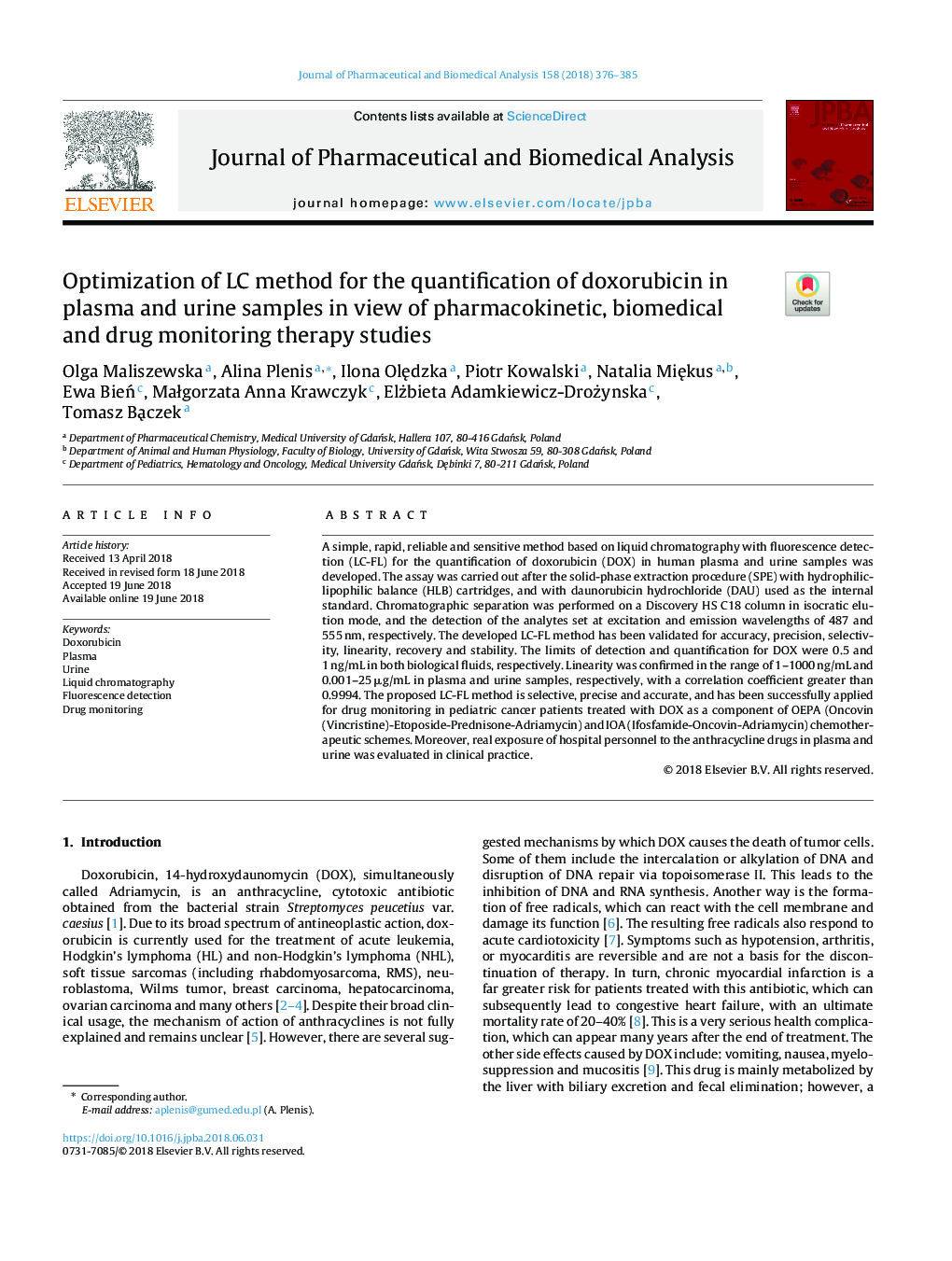| Article ID | Journal | Published Year | Pages | File Type |
|---|---|---|---|---|
| 7626112 | Journal of Pharmaceutical and Biomedical Analysis | 2018 | 10 Pages |
Abstract
A simple, rapid, reliable and sensitive method based on liquid chromatography with fluorescence detection (LC-FL) for the quantification of doxorubicin (DOX) in human plasma and urine samples was developed. The assay was carried out after the solid-phase extraction procedure (SPE) with hydrophilic-lipophilic balance (HLB) cartridges, and with daunorubicin hydrochloride (DAU) used as the internal standard. Chromatographic separation was performed on a Discovery HS C18 column in isocratic elution mode, and the detection of the analytes set at excitation and emission wavelengths of 487 and 555â¯nm, respectively. The developed LC-FL method has been validated for accuracy, precision, selectivity, linearity, recovery and stability. The limits of detection and quantification for DOX were 0.5 and 1â¯ng/mL in both biological fluids, respectively. Linearity was confirmed in the range of 1-1000â¯ng/mL and 0.001-25â¯Î¼g/mL in plasma and urine samples, respectively, with a correlation coefficient greater than 0.9994. The proposed LC-FL method is selective, precise and accurate, and has been successfully applied for drug monitoring in pediatric cancer patients treated with DOX as a component of OEPA (Oncovin (Vincristine)-Etoposide-Prednisone-Adriamycin) and IOA (Ifosfamide-Oncovin-Adriamycin) chemotherapeutic schemes. Moreover, real exposure of hospital personnel to the anthracycline drugs in plasma and urine was evaluated in clinical practice.
Related Topics
Physical Sciences and Engineering
Chemistry
Analytical Chemistry
Authors
Olga Maliszewska, Alina Plenis, Ilona OlÄdzka, Piotr Kowalski, Natalia MiÄkus, Ewa BieÅ, MaÅgorzata Anna Krawczyk, Elżbieta Adamkiewicz-Drożynska, Tomasz BÄ
czek,
